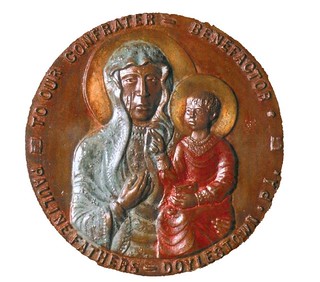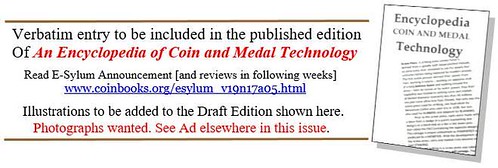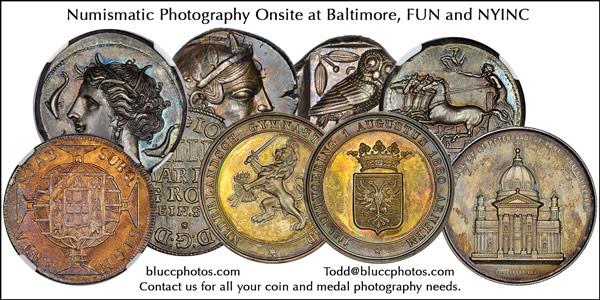
PREV ARTICLE
NEXT ARTICLE
FULL ISSUE
PREV FULL ISSUE
VOCABULARY TERM: GLORY
Dick Johnson submitted this entry from his Encyclopedia of Coin and Medal Terminology. Thanks.
-Editor

A gold-colored glory or halo is emphasized on this medal with multi-colored patina by sculptor Andrew Pitynski. It shows holy figures of Mother and Child. Glory. Rays or rings indicating radiant or divine light around the head or body of a sacred person as a saint, sovereign, holy person or thing; also a halo, aureola, nimbus, or corona. The glory is symbolic of spiritual light and is expressed on numismatic items as rays for beams of light, or rings as the circular halo surrounding the head, occasionally PIERCED on medallic items. History of glory as a device. The halo is said to have developed from the ancients who believed they saw an aura of light emanating from the body of a holy person, the light being a mystical form of intellectual energy. Since it had a pagan origin –in Hellenistic and Roman art the sun-god Helios appeared with a crown of rays – it was avoided in early Christian art. It was not until the middle of the fourth century that Christian emperors adopted a simple circle as a nimbus for their official portraits, and at the end of that century that Christ was depicted with an imperial attribute of a similar circle. Later, saints, the Virgin Mary and angels were shown with a simple halo. At first a circle or disk, the nimbus developed into different shapes to express further symbolism: triangular for the trinity of God, three half circles at right angles to each other for the same trinity, a circle with a cross for Christ, sometimes a band of stars for the Virgin Mary, a square nimbus for a living person, and a circle for saints. Sometimes the entire body was enclosed in an oval or mandorla in a further expression of glory (and is the reason for the mandorla shape in medallic art – trimmed to oval shape). Divine light has been represented in a variety of ways in different art forms and at various periods. Early paintings utilized a solid gold circle as the halo; Florentine artists depicted it as a solid flat disk affixed to the back of the head. Fifteenth century Flemish painters expressed it as rays of light. In early sculpture it was a band or crown placed firmly upon the head, and later, as in ecclesiastical statues, it was a ring supported by a rod attached to the back of the neck. In reliefs and early numismatic art, the nimbus was expressed as a simple ring about the head. Numismatic representation. Coins of the Roman emperors of the first century AD were the first numismatic items to display the halo or nimbus. These took the form of garlands of rays like a crown upon the head. Roman medallions were the first to bear the simple circular form prior to this use by painters, an example of numismatic art at a forefront of fine arts. Imperial coins of Christian emperors, notably a silver missorium of Theodosius I, issued in the fourth century, were the first numismatic items to bear the Christian form of the nimbus, but they did not differ greatly from the pagan halo used earlier. The earliest forms of Christ, on Byzantine bracteates, bear the circular line of a simple halo. During the Renaissance, the growth of naturalism proved difficult to display the nimbus, and artists (including Michelangelo) even rejected its use entirely. In more modern times the expression of glory is in wide use and has even spread to inanimate objects, used to add emphasis to design elements such as dates and such. See RAYS. CLASS 02.2


Wayne Homren, Editor The Numismatic Bibliomania Society is a non-profit organization promoting numismatic literature. See our web site at coinbooks.org. To submit items for publication in The E-Sylum, write to the Editor at this address: whomren@gmail.com To subscribe go to: https://my.binhost.com/lists/listinfo/esylum All Rights Reserved. NBS Home Page Contact the NBS webmaster 
|